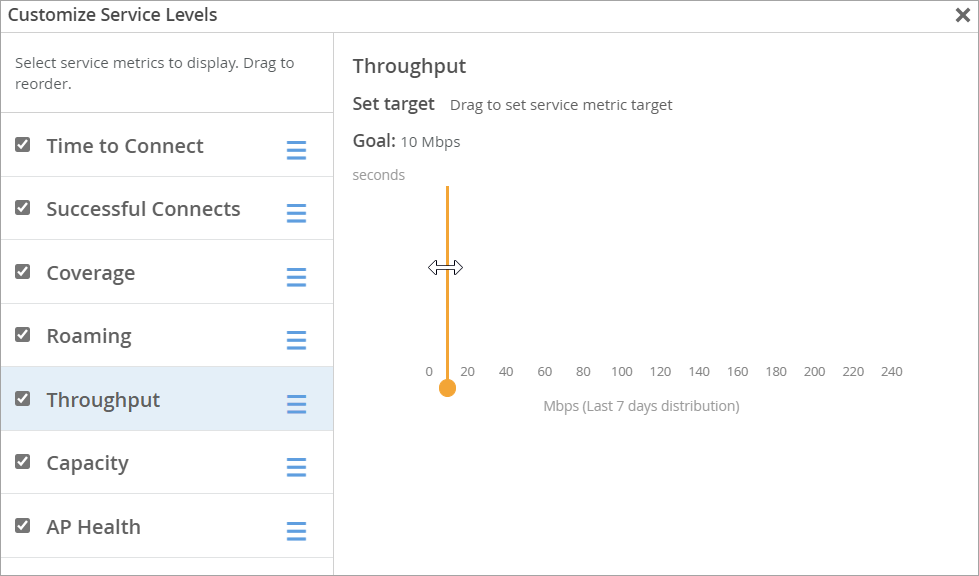- play_arrow Get Started
- play_arrow Access Points
- Overview of Juniper APs
- Juniper AP Ports and Their Usage
- PoE Requirements for Juniper APs
- play_arrow AP Dashboard
- play_arrow Onboarding
- play_arrow Configuration
- Auto-Provision Device Names, Sites, and Device Profiles
- BLE Settings
- Configure Ethernet Settings in a Device Profile
- Configure IP Settings
- Wireless Mesh Network Configuration
- Enable RTLS Support
- Electronic Shelf Labels
- Enabling LEDs on the AP
- Configure an AP for Survey Mode
- Configure Your APs as IEEE 802.1X Supplicants
- Enable Local Status Page
- Revert AP Configuration Automatically
- play_arrow Device Profiles
- Monitor and Manage Access Points
- Access Point FAQ
- play_arrow WLANs and WLAN Templates
- play_arrow Security
- Configure AP Threat Protection
- RSSI, Roaming, and Fast Roaming
- play_arrow RADIUS
- play_arrow Preshared Keys
- Rogue, Neighbor, and Honeypot Access Points
- play_arrow PCI DSS Compliance
- play_arrow WxLAN Access Policies
- Using WLAN Templates in a Device Profile
- Configure a WLAN Template
- Adding a WLAN
- WLAN Options
- Tips for Wi-Fi 6E (Video)
- Add a Bonjour Gateway to a WLAN
- Configure a Third-Party Tunnel
- Enable Geofencing
- Wi-Fi Data Rate Configuration
- DSCP Mapping
- WLAN Changes That Reset The Radio
- play_arrow Integrations
- play_arrow WLAN Guest Portal
- Compare WLAN Guest Portal Options
- Automatic Client VLAN Assignments
- play_arrow Custom Guest Portal
- Use an External Portal for Guest Access
- play_arrow Use an Identity Provider for Guest Access
- Authorize, Reauthorize, and Reconnect Guest Clients
- Troubleshoot a Guest Network That Doesn't Work
- FAQs: Guest Portal
- play_arrow Radio Management
- play_arrow Troubleshooting
- Using SLEs for Troubleshooting
- Wi-Fi Reason Codes
- play_arrow Troubleshooting an Access Point
- Replace an AP
- Reset an AP to the Factory-Default Configuration
- Troubleshooting Wireless Issues
- Common Wi-Fi Issues
- Dynamic and Manual Packet Captures
- Steer Clients to the 5-GHz Band
- Bonjour and Bluetooth Devices
- LLDP-MED Power Negotiation
- Troubleshoot Your Integration with Aruba ClearPass
- Use Labels to Identify "Unknown" Applications
- play_arrow Technology Reference
Wireless Throughput SLE
Use the Throughput SLE to assess users' experiences with throughput on your wireless network.
Throughput is one of the wireless Service-Level Expectations (SLEs) that you can track on the Wireless SLEs dashboard.

To find the Wireless SLEs dashboard, select Monitor > Service Levels from the left menu, and then click the Wireless button.
What Does the Wireless Throughput SLE Measure?
Juniper Mist calculates the estimated throughput on a per-client basis for the entire site. This calculation is done for every client every minute. The estimator considers effects such as AP bandwidth, load, interference events, the type of wireless device, signal strength, and wired bandwidth, to arrive at the probabilistic throughput.
You can click the Settings button to set the success threshold for this SLE.

Classifiers
When the throughput threshold is not met, Juniper Mist sorts the issues into classifiers. The classifiers appear on the right side of the SLE block. In this example, less than 1 percent of the issues were attributed to Coverage, and more than 99 percent were due to Capacity. (See the classifier descriptions below the example.)

Network Issues—Low throughput is primarily due to the capacity of the wired network.
Coverage—Low throughput is primarily due to the client’s weak signal strength.
Device Capability—Low throughput is primarily due to issues with the device capability. For example, throughput issues can occur if a device only supports 20 MHz wide channels, one spatial stream, or a lower version of Wi-Fi (802.11 g/802.11 n).
Capacity—Low throughput is due either to the load on the AP or interference on the channel.
The capacity classifier has four sub-classifiers:
High Bandwidth Utilization
Non Wi-Fi Interference
Excessive Client Load
Wi-Fi Interference
You can use these sub-classifiers to analyze users and APs below the SLE goal, the timeline of failures and system changes, and the distribution of failures. You can also analyze related network processes that these sub-classifiers can influence.




















